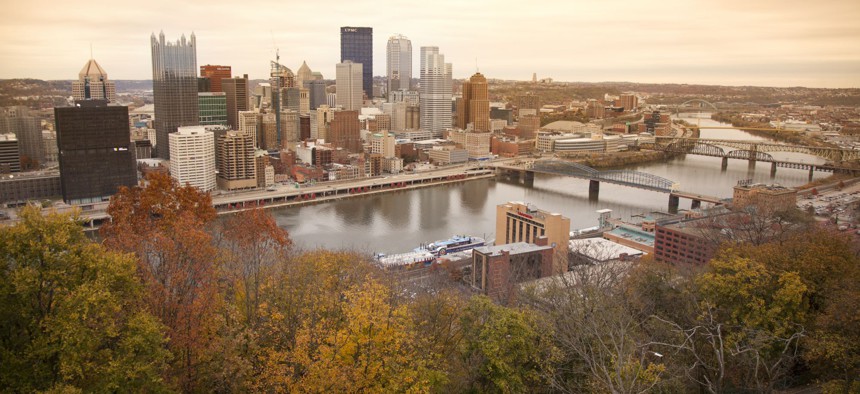Google Street View Car Sniffs Out Hidden Danger in Pittsburgh

Pittsburgh, Pennsylvania Shutterstock
A collaborative effort is mapping leaky gas pipes.
PITTSBURGH — Natural gas leaks are usually viewed through the lens of public safety. Problematic pipes and other infrastructure can lead to dangerous explosions, like the one in New York City’s East Village in March 2015 that killed two people and leveled an apartment building or, more recently, an August gas leak explosion that killed seven people in an apartment building in Silver Spring, Maryland.
While the potential dangers of gas leaks are ever present in aging pipeline infrastructure, in Pennsylvania’s second-largest city, authorities are also concerned with the environmental impacts from escaping methane, a greenhouse gas.
Over the past year, a Google Street View vehicle equipped with a methane-detection sensor has picked up 200 indications of leaks from Peoples Natural Gas pipes in a half dozen of Pittsburgh’s neighborhoods, including Lawrenceville, a historic area undergoing a lot of revitalization.
As the Pittsburgh Post-Gazette reported Tuesday:
As with so many things, the first step is admitting you have a problem. Peoples took that step when the utility called the Environmental Defense Fund last year and asked the organization to help map its leaky pipes — pipes that the company is replacing to the tune of $3 billion over the next 20 years.
Peoples’ pipeline replacement plan is front-loaded in the City of Pittsburgh, where all bare metal pipes will be replaced within the next five to seven years. Peoples has already done a lot of work in Lawrenceville, putting plastic pipelines in areas just above Arsenal Park. The blocks around the park are on the schedule for next year.
Those efforts resulted in a mapping project detailing areas in Pittsburgh with potential problems.

The Environmental Defense Fund has undertaken similar methane-detection mapping efforts in Boston , Chicago , Dallas and Jacksonville , Florida, among others .
While the Pittsburgh study found one leak for every two miles driven, the rate was one leak for every mile driven in Boston, where nearly 45 percent of pipes are made of cast iron or other materials prone to leaks.
The Post-Gazette continued:
[I]n addition to working with EDF, Peoples has also engaged Carnegie Mellon University engineers in a parallel effort. That team — led by Allen Robinson, head of mechanical engineering and director of the newly-formed Center for Air, Climate, and Energy Solutions at CMU — has been helping Peoples quantify methane leaks before and after pipeline replacements projects. It's also working with the utility to adjust how Peoples prioritizes infrastructure efforts by making environmental considerations a part of the formula.
In 2014, a study lead by researchers at Boston, Duke and Stanford universities discovered nearly 6,000 gas leaks in Washington, D.C. , including 12 locations where the gas concentration could potentially cause an explosion, The Washington Post reported at the time.
Michael Grass is Executive Editor of Government Executive’s Route Fifty and is based in Seattle.
NEXT STORY: Former Mayor in South Carolina Led 40-Year Effort to Prepare for Natural Disasters






